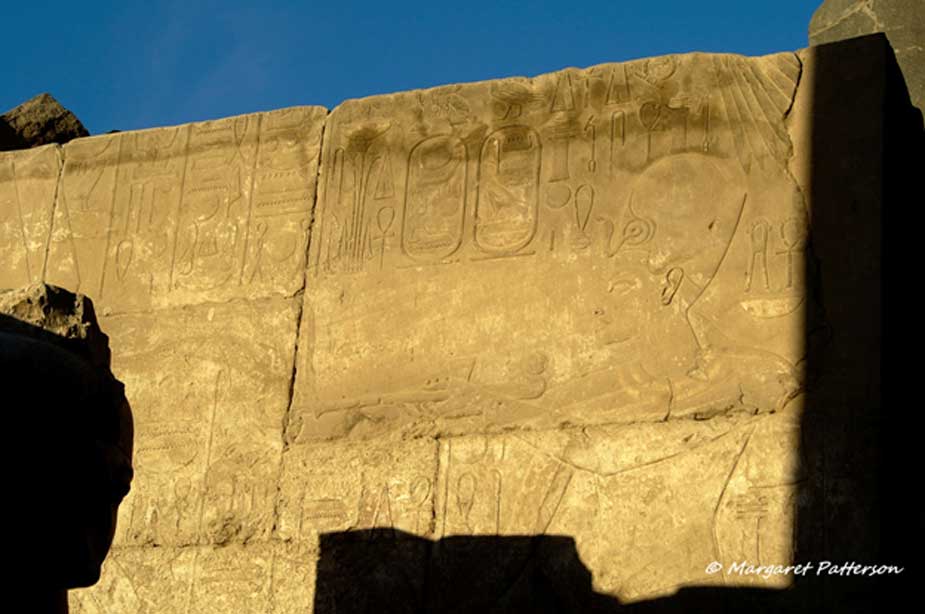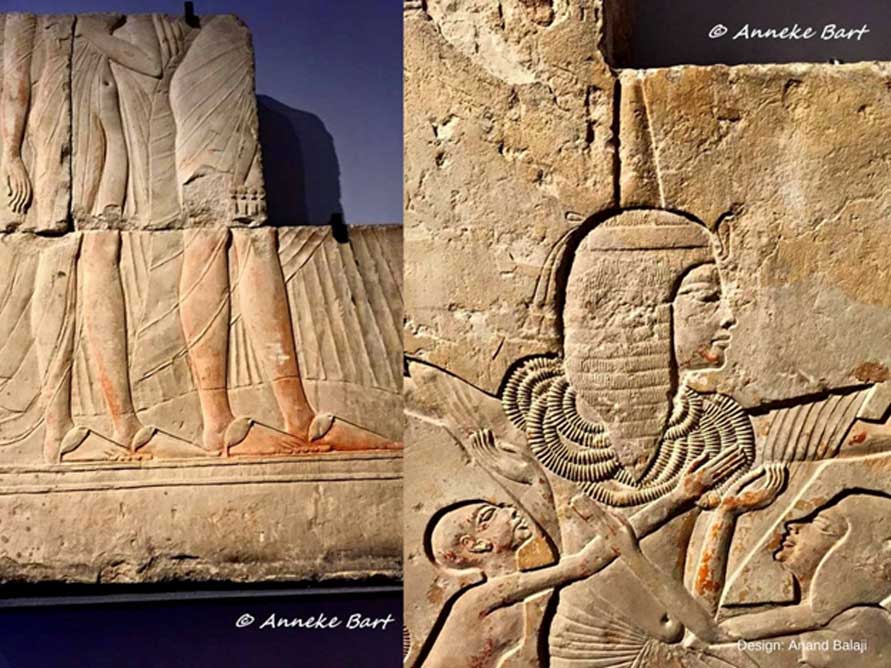
The Rage of Horemheb: Traditionalism for the Greater Glory of the Egyptian State – Part II
Horemheb was no run-of-the-mill general, but a true nationalist at heart. The demise of King Aye was a watershed moment, insofar as getting the country back on track wholeheartedly was concerned. With no opposition to him or his ideals; Horemheb paved the way for a greater Egypt than that which had gone before.

When he came to the throne, Pharaoh Horemheb lost no time in dismantling the Amarna religious apparatus; and with it, the memory of those who were involved in the promotion of Atenism. Here, the king is depicted in a wall relief on the back of the Second Pylon at Karnak Temple. Image of Tutankhamun, with cartouches usurped by Horemheb, on the inner face of the west gateway into the Colonnade Hall of Luxor Temple.
Crown Prince and His Queens
"Many will doubtless have continued in office from Tutankhamun's regime, and certainly Maya was still treasurer during Horemheb's reign. One would assume that Horemheb remained in a position of power, but no material definitely dating to Ay's reign refers to him; the king depicted in his Saqqara tomb appears throughout to be Tutankhamun," explains Dr Aidan Dodson.
Horemheb does indeed seem to have been absent from the limelight for the intermezzo of Aye’s reign. Tutankhamun is the only king documented in the reliefs and inscriptions of his pre-royal tomb at Saqqara. The pharaoh initially presumed to be Aye, depicted officiating at a fragmentary scene of awarding Horemheb the Gold of Honor in the second courtyard, turns out to have been Tutankhamun instead. Mention of King Aye is limited to his name on a few small finds from the tomb. In the accompanying inscriptions, Horemheb boasts that: "his name was renowned in the land of the Hittites" - a remarkable statement, one which is usually applied only to the King.

These fragmentary scenes, originally from the second courtyard of his Saqqaran tomb, show King Horemheb being awarded the Gold of Honor by Tutankhamun for his military prowess. Rijksmuseum van Oudheden, Leiden.
For a proper and accurate picture of Horemheb's role under Tutankhamun one must turn to his lavish Saqqaran tomb; the one that he abandoned after becoming pharaoh. Several scenes were altered here ever so subtly - for example, a uraeus was added to the brow of the Generalissimo. Most of the titles and office Horemheb lists on the walls of the tomb are identical to the Coronation Text. He basically attempts to drive home the point that he was the uncrowned king of Egypt whilst Tutankhamun was alive; and that Aye had thwarted his plans. He harps on his divine election and appointment to various offices by Tutankhamun.
“Horemheb's Coronation Inscription on the rear of a pair of statues of him and his second wife, Queen Mutnodjmet is of great importance. He describes how his god Horus of Hutnesu had intended for him to be a king from childhood (and with which Amun of Karnak has agreed to when the time had come for him to be coronated); it was this Horus who: "distinguished him from all other people" and who made him the one whose exploits pleased the king (Tutankhamun),” states Dr Jacobus van Dijk.




